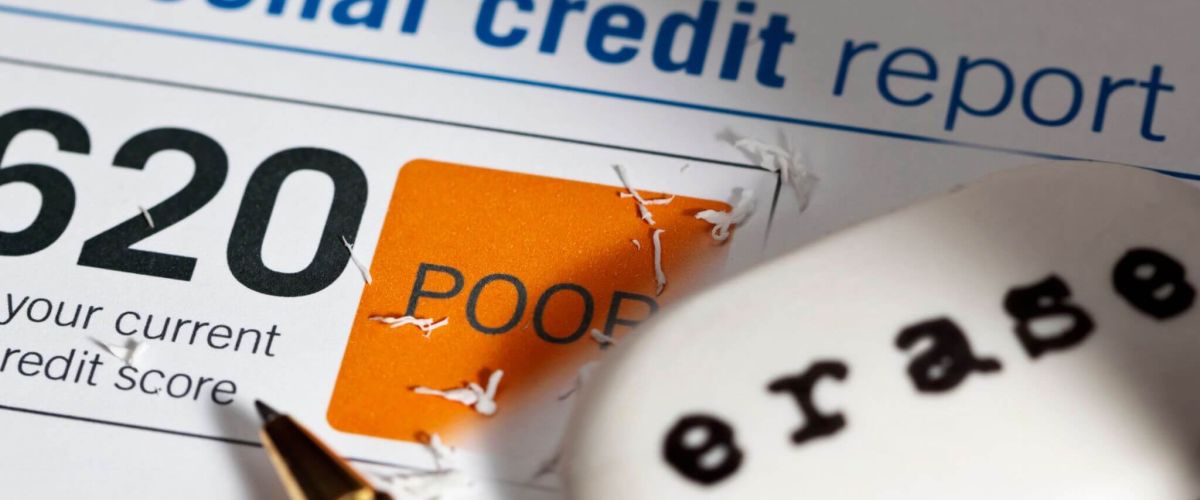Table of contents
Your credit report is an essential document that plays a crucial role in determining your financial reputation. While having settled accounts on your report may not be as detrimental as unpaid or delinquent accounts, they can still impact your credit worthiness.
Fortunately, there are steps you can take to remove settled accounts from your report. In this article, we will explore the reasons why you might want to remove these types of accounts, the impact they can have with the credit reporting agencies, and most importantly, the strategies you can employ to eliminate these accounts from your report for good. Let’s dive in and discover how you can improve your credit health and pave the way for a brighter financial future.
What Are Settled Accounts and how do they affect me?
Settled accounts, commonly known as settlements, are debts that you have resolved with the original creditor or debt collection agency by paying the agreed-upon amount, usually a reduced or negotiated amount. These accounts may include credit cards, loans, or any other type of debt that you have successfully paid off.
Settlements can have both positive and negative effects on both your credit history and your credit score. Settlements are typically closed accounts which means that even if you have settled the account and it is no longer active, it can still report as a closed derogatory mark.
The impact to your credit score may vary depending on factors such as your overall history and the credit scoring model used. Generally, settling an account will not remove the account but it will be updated to show that the account was settled or paid in full, resulting in a negative item.
Lenders may view settlements as an indication that you had difficulty managing your debt in the past and were unable to fulfill your financial obligations. This can make it harder for you to secure new credit or loans in the future, as lenders may perceive you as a high risk borrower.
It’s important to note that the impact of these types of accounts on your credit score may vary depending on the scoring model used by lenders. Some scoring models may weigh settlements more heavily than others.
How to Remove Settlements
Settlements typically stay on your credit profile for a period of seven years from the date of the first delinquency. This means that even after you have settled the account, it will still be visible to lenders and creditors who review your credit history. You do have a couple of ways to potentially remove the settlement from your credit profile.
 Goodwill Letters
Goodwill Letters
One potential way to remove settlements is by writing a goodwill letter to the creditor or debt collector. In this letter, you can explain the circumstances that led to the account being settled and emphasize your efforts to improve your financial situation.
While a goodwill letter does not guarantee that the settlement will be removed, it can show the creditor or collector that you are proactive in trying to rectify the situation. They may be willing to make an exception and remove the account as a gesture of goodwill.
Pay-for-Delete
Another method to remove these accounts is through a pay-for-delete agreement. This involves negotiating to have the negative information removed from your report in exchange for full payment of the outstanding debt. It’s important to negotiate and get any agreement in writing before making the payment.
Keep in mind that not all creditors or debt collects are willing to enter into a pay-for-delete agreement. It may take some persistence and negotiation skills to find a willing party. Additionally, this method is not guaranteed to work, as the decision ultimately lies with company attempting to collect the debt.
Disputes
Disputing settlements is another option to potentially remove them from your history. Under the Fair Credit Reporting Act (FCRA), you have the right to dispute any information that you believe is inaccurate, incomplete, or outdated.
It’s important to note that not all disputes will be successful in removing these accounts. If the creditor or debt collection agency can provide evidence that the account was indeed settled, the credit bureau may determine that the information is accurate and choose to keep it on your report.
Is Debt Settlement right for me?
There are several reasons why you might choose to settle an account instead of paying it in full.
Firstly, settling an account can help you avoid further damage to your payment history. When you have an account that is past due or in default, it can have a negative impact on your report. By settling the account, you can show that you are taking responsibility for your debts and taking steps to resolve them.
Secondly, settling an account can save you money. In many cases, a debt collection agency is willing to accept a lesser amount than what you owe in order to close the account. This can be beneficial if you are struggling to make payments or if you cannot afford to pay the full balance.
Strategies to Rebuild Credit After You’ve Settled Your Debt
Become an Authorized User
One strategy to rebuild credit after settling accounts is to become an authorized user on someone else’s credit card. By being added as an authorized user, you can benefit from the primary cardholder’s positive financial past and responsible credit habits. Make sure to choose someone who has a good payment history and who will continue to make timely payments. This can help to improve your credit score over time.
Apply for a Secured Card
Another option is to apply for a secured card. A secured card requires a security deposit, usually equal to your credit limit, which serves as collateral for the card. By using a secured card responsibly and making timely payments, you can demonstrate good credit habits and begin to rebuild your credit.
How to Avoid Debt Settlement
Debt Consolidation
Debt consolidation is an option to consider before resorting to debt settlement. It involves combining multiple debts into a single loan or credit card with a lower interest rate. By consolidating your debts, you can potentially save money on interest payments and make it easier to manage your monthly payments.
To pursue debt consolidation, you can either:
- Apply for a personal loan: This involves taking out a loan from a bank, credit union, or online lender to pay off your existing debts. The loan amount should cover the total outstanding balances of your debts. Once you receive the loan, you can use it to pay off your debts with the original creditors.
- Transfer your debts to a balance transfer account: Some creditors offer promotional or introductory interest rates for balance transfers. You can transfer your high-interest balances to a new card and focus on paying off one debt with one interest rate. This can reduce or eliminate interest charges and make it easier to pay off your debt faster.
Debt Management Plan
A debt management plan (DMP) is another alternative to settling your accounts. A DMP is a formal agreement between you and your creditors, facilitated by a credit counseling agency. The agency will work with you to create a manageable repayment plan based on your current financial situation.
Under a DMP, you make monthly payments to the credit counseling agency, and they distribute the funds to your creditors on your behalf. This can help you avoid missed or late payments, as the agency ensures that your creditors receive their payments on time.
Loan Modification
Loan modification is an option to consider if you’re struggling to make your monthly payments. With a loan modification, you can negotiate with your creditor to modify the terms of your loan to make it more affordable and manageable for you.
Some possible modifications include lowering your interest rate, extending the repayment period, or reducing the monthly payment amount. The goal is to create a payment plan that fits within your budget and allows you to make consistent and timely payments.
To pursue a loan modification, you will need to contact your creditor and explain your financial situation. Provide them with any documentation they may require, such as proof of income and expenses. It’s essential to be open and honest about your financial difficulties and express your willingness to work towards a solution.
If your creditor agrees to a loan modification, make sure to obtain the terms of the agreement in writing. Keep a copy for your records and ensure that the modified terms are accurately reflected on your account.
Key Takeaways
While settling your accounts may result in a “settled” notation, there are steps you can take to potentially remove or minimize the impact of these accounts. It’s important to note that removing settlements from your report is not guaranteed, but by following the strategies outlined in this article, you can improve your chances of achieving a positive outcome.
Start by reviewing your credit report regularly and identifying any accounts that are inaccurately reporting to the major credit bureaus. Dovly, an AI credit engine can help you work towards overall credit improvement and financial wellness. Try it risk-free with our free membership tier. Get in touch with Dovly today.
Related Blog Posts
Frequently Asked Questions
No. We do much more than free credit repair. Dovly is a comprehensive AI credit solutions engine that monitors, (re)builds, and protects your credit. It offers a range of tools and services to assist you in achieving better financial health.
Yes, you can trust Dovly. Not only do we work with national banks, reputable businesses, and personal finance companies, we also have executive leaders who are accomplished and respected by industry peers. But more than anything our customers can attest to our value and service. Our Database is also encrypted and all personal information is stored on a segregated network to provide an additional layer of security.
Dovly Free members see an average score improvement of 37 points, while Premium members see a 69 point score improvement on average. Our data shows that members who are more engaged and log into Dovly regularly see significantly better results.

